In this Article...
Autodesk released the Progress Tracking feature as a beta a while back. There are some changes before Autodesk ends the beta. One difference is that Autodesk decided the Progress Tracking should be under Assets. The logic is when the construction is finished; the item will be a construction asset.
However, there are some features in the Progress Tracking beta missing when the items are considered assets:
- There is no Progress Tracking dashboard. In beta, we saw a dashboard where we could review the construction progress graphically.
- The asset markups don’t have the geometry properties. In beta, the markup collects the properties such as markup length and area. It allows us to measure the progress of more than just the number of instances. We can track the completed area of work, for example.
Let’s see how the Progress Tracking under Assets works.
Managing Assets
Before you can start creating markups, you need to configure the assets. You need to define the categories and subcategories, the construction status you want to track, then set the permission for who can access and modify the assets.
Open Autodesk Build.
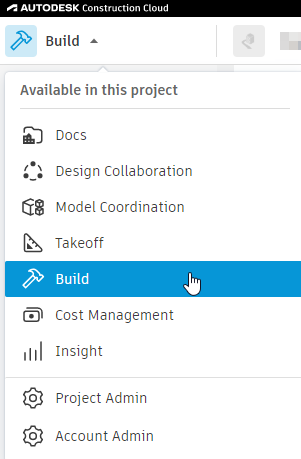
On the left sidebar, go to Assets.
Status Sets
First, let’s create a status set. You can define a specific status set for each category. For example, you want to track the fabrication material on site, installation, and testing for mechanical HVAC installation. You need to track the formwork, rebar, and concrete work for the concrete works.
With the Assets feature active, click the settings dropdown, then choose Status Sets.
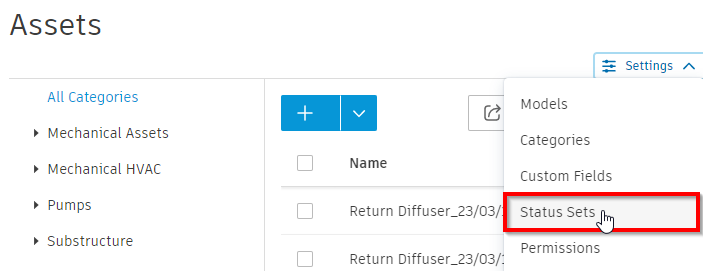
Autodesk Build opens the status set setting page. Click create status set.
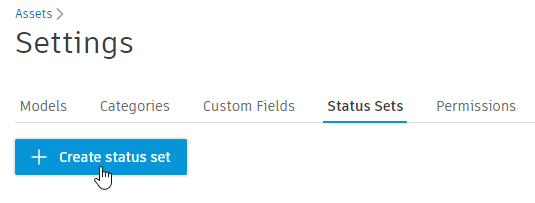
Autodesk Build opens a wizard. In the first step, provide the name and description for this status set.
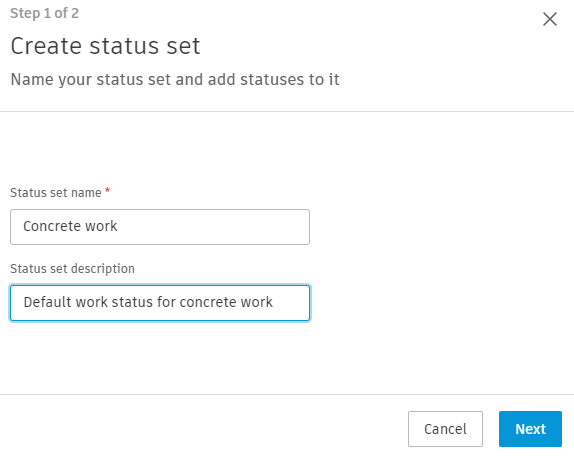
In step 2, define all the statuses. Provide the name, description, and color of the status.
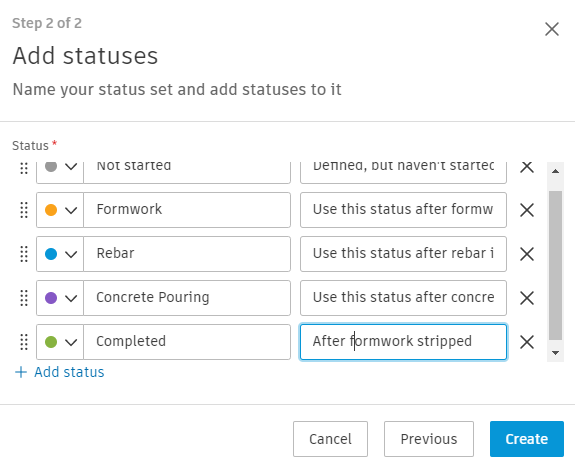
When you have defined all the statuses, click Create.
Asset Category
You need to create a category of the assets. Defining a category allows you to manage the items better. And also it enables you to set a specific status to track. For example, the HVAC installation work status differs from concrete works. Mechanical equipment will require a particular status set.
If you are still on the Assets settings page, click the Categories tab.
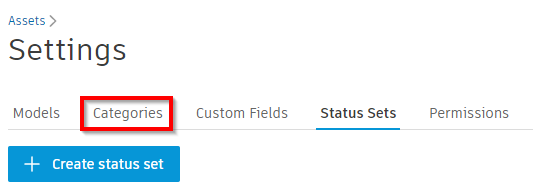
If you are on the Assets page, click Settings> Categories.
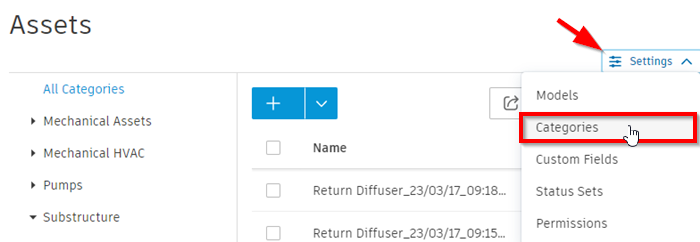
In the categories settings, click create category button. You can click the create category link in the list. This is particularly helpful when you need to define subcategories. Link (1) will create the main category, and link (2) will create a subcategory.
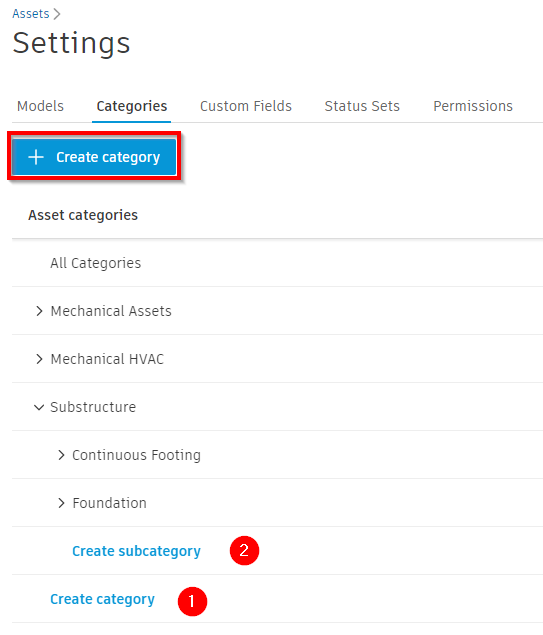
Autodesk Build opens the create asset category wizard. Provide the category name and select a status set.
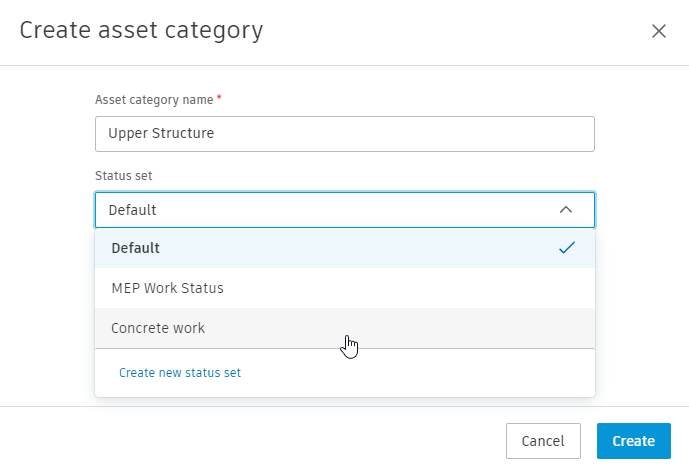
Permissions
The last step in the assets settings is to set the asset’s permissions. Giving permission in assets is similar to permission in other workflows. If you are unfamiliar with giving authorization, refer to this help document.
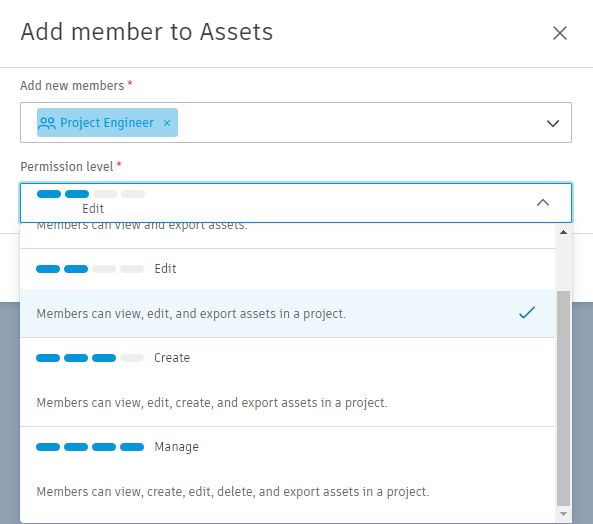
Creating Assets
Creating Assets is straightforward. You can create the assets on the asset page and change the status and properties directly on this page. You can import the assets from an Excel file or a Revit model to bulk-create assets.
However, to track the progress of the assets graphically, you need to draw the asset on a sheet.
Creating Assets In Sheets
You can mark assets in a sheet. You can’t mark them in files. If you want to track the construction progress, you must have sheets in the project. If you’re unfamiliar with creating sheets, refer to Autodesk Build’s help here.
Open a sheet. When the viewer is opened, click the assets button on the top left of the window.
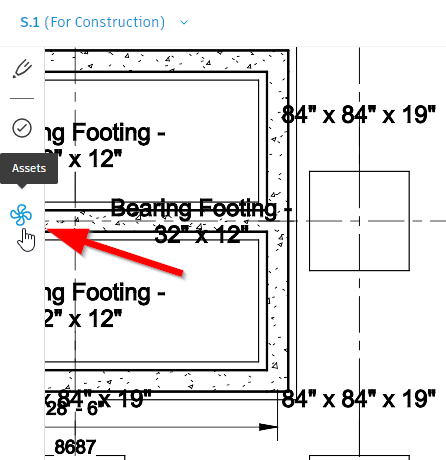
The assets list opens. Click show asset markups. If you already have assets in this sheet, you will see them in the list. Now let’s create some assets in this sheet.
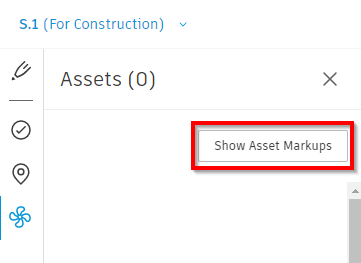
You can see the asset markups tool on the right side of the sheet.

Now you need to draw the position of the assets. First, define what the asset category (1) is. In this example, I use the foundation category. Next, use the draw tool to markup the asset (2).

You can draw lines, rectangles, polylines, polygons, circles, or highlights. Autodesk Build shows the markup color as the first status color in your status set.
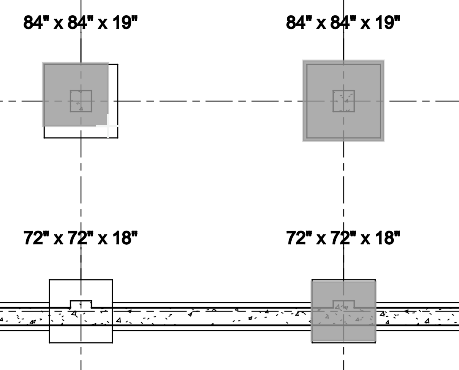
You will see the asset markups in the list. Autodesk Build also automatically creates assets, names them as the selected category, and adds a time stamp as the prefix.
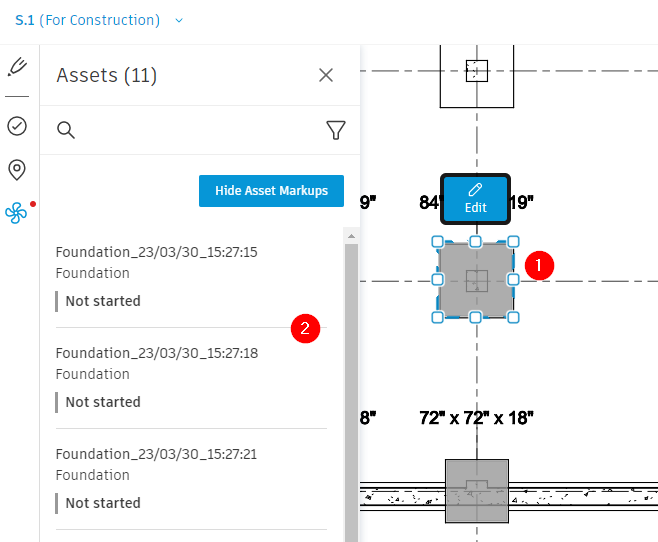
When you create an asset markup, you also create an asset. You can see the asset on the asset page.
Markup an Existing Asset
What if you want to create markup assets from an existing asset? Sometimes we want to add assets in bulk by importing them from an Excel file. Or import them from a Revit model. Often another person creates the assets, and we want to track the work graphically.
You need to link the asset to a markup. In the asset markups tool, select the assets tab (1). You can see all created assets in the list. Select which one you want to markup (2). Then you can select the markup type (3) and place it on the sheet.
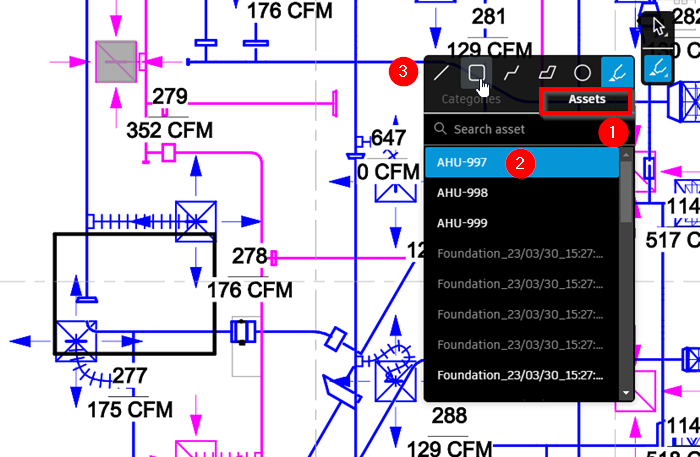
Updating Assets Status
When construction starts, you can change the status of the assets. There are two ways to do it.
First, you can change the status from the asset page. This way is suitable when you want to track a small number of work, and you can identify them quickly. For example, mechanical equipment like AHUs and pumps.
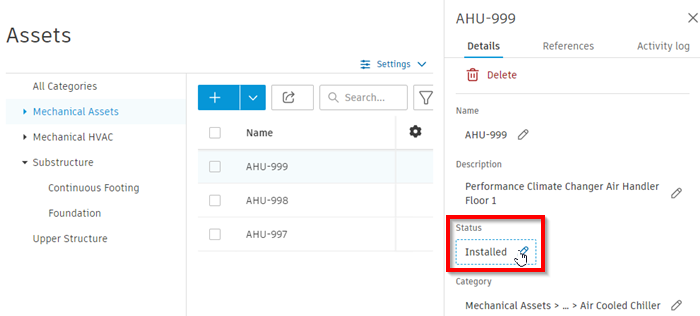
Second, you can open the sheet and select the asset markups to change the status. This is a better way when you can only identify them graphically.
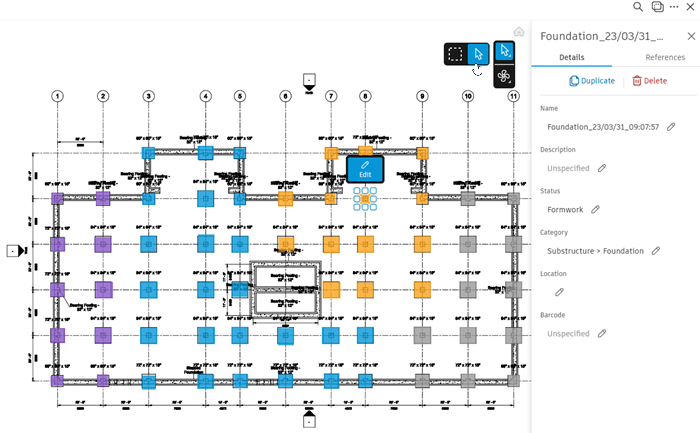
As you can see, you can see the progress status on that sheet. The color represents the status of the works.
And don’t forget you can also use a mobile device to change the work status.
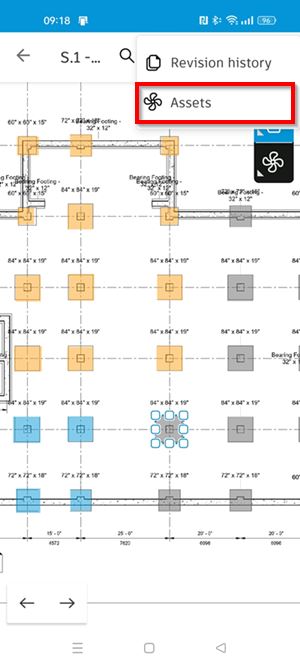
To Sum Up
Asset progress tracking is a good tool for tracking construction completion. You can use assets if you don’t need to track the progress graphically. But when you do, you can use the asset markups on sheets.
Unfortunately, you can’t export the asset markups when you export the sheet into a pdf file. And you don’t have the insight dashboard like in beta. Of course, you can use Power BI to create a custom dashboard as a workaround.
What do you think about tracking the construction progress with assets?




No project will succeed without tracking progress. Our construction team has been using software for a long time to control procurement, logistics, task assignment, and many other stages of construction.